Update: Mass Evacuation of aircraft from Tripoli, August 14
- A mass evacuation of aircraft is taking place at the moment from Tripoli, including a number of A330 and A320 aircraft from both the largest carrier (Afriqiyah) and smaller operators. Inbound flights are also diverting, and the Libyan government aircraft, a King Air 350, is also being taken out of Tripoli. Almost all aircraft are being repositioned to Misrata (HLMS) – with approximately 25 aircraft being moved.
- The reason for the evacuation is violent clashes involving gunfire taking place at Tripoli Mitiga airport (HLLM), as well as on road leading into Tripoli itself. Earlier on Monday night the head of ‘444 brigade’ that controls much of Tripoli, was detained at Mitiga airport by the Special Deterrence Force. The resulting risk to aircraft operations was deemed sufficiently high to begin the removal of aircraft to a safer location.
- This situation highlights the instability of the security situation in Libya. With the airspace closure in Niger last week, routes over Africa have become very limited, and Libya/the Tripoli FIR may seem a tempting alternative.
- Operators considering a Libya overflight should consider routings very carefully. This is the most significant aviation security event in Libya in the last few years, and highlights the ongoing risk to operations. Refer to safeairspace.net/libya for the background.
A timely summary of the risk to civilian operators in the Tripoli FIR
From March 2023, gathered by OPSGROUP from neighboring ATC units:
- The ATM/CNS situation in the HLLL FIR is very basic and from our experience there are issues with communications and surveillance (or the lack of it).
- There is a lot of military activity which is not always known to Tripoli and Benghazi ACCs also due to these communication and coverage issues.
- There are still issues regarding coordination between the Tripoli and Benghazi ACCs. One seems to have certain rules which the other ignores. It is very frequent for example that either one or both reject overflights resulting in significant re-routings which we have to sort out (normally military flights) but not excluding civilian flights – sometimes even Libyan flights.
- We see a lot of remotely piloted aircraft operating in the airspace which as far as we know are not operating in segregated airspace nor are they being controlled by the ATC units.
- Only recently Libyan controllers went on a flash strike informing us that they cannot continue to handle the traffic with no radar equipment.
- The AIS services are not functioning properly and the status of the airports is unknown.
Is Libya safe to overfly?
With the vastly reduced number of routing options available to operators as of August 2023 (closures of Niger and Sudanese airspace), this question will come up quickly for operators crossing North Africa. We asked this question back in 2022, and decided that no, it probably wasn’t.
Now, the FAA have added some areas of the HLLL FIR that they determine to be “OK”.
Where are we talking about?
Libya’s airspace is the HLLL/Tripoli FIR:
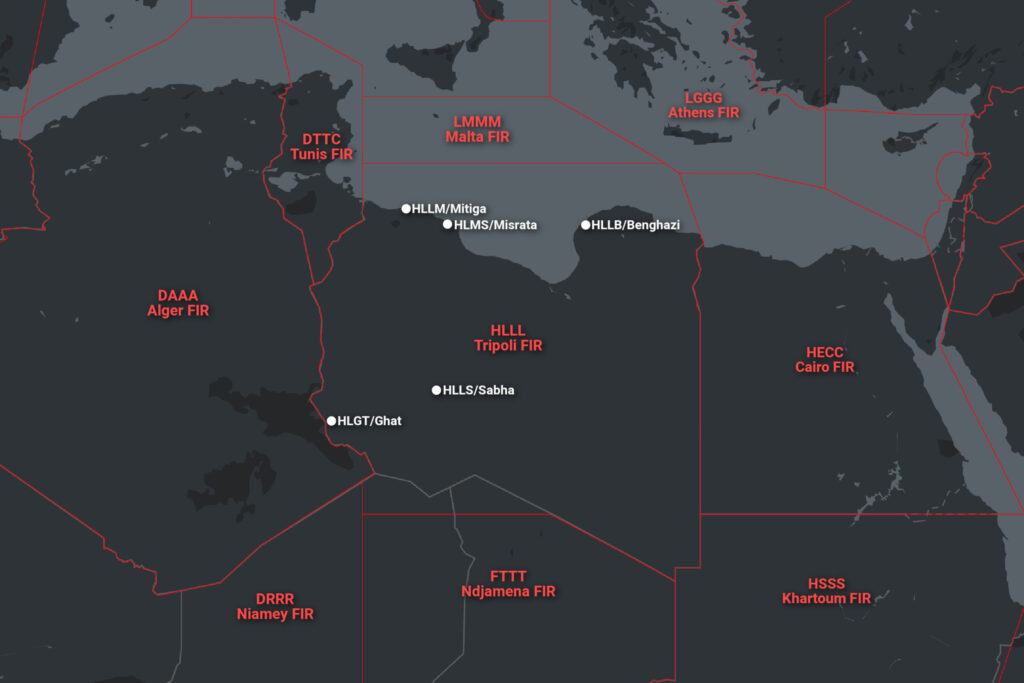
What’s the deal?
The US FAA says this:
The FAA assesses the risk to U.S. civil aviation operations in the portions of the Tripoli FIR (HLLL) outside the territory and airspace of Libya at altitudes below FL300 has diminished and the situation has stabilized sufficiently to permit U.S. civil aviation operations to resume in that airspace. Since the October 2020 ceasefire agreement, foreign actors have significantly reduced weapons shipments and military activities off the coast of Libya. Previously, these activities included targeting suspected weapons shipments destined for the opposing side or their foreign sponsors. As a result, the risk of either side or their foreign sponsors misidentifying civil aircraft operations in the overwater portion of the Tripoli FIR as carrying weapons shipments destined for the other side or their foreign sponsors and mistakenly targeting them has diminished. The reduction of widespread conflict has also reduced the risk to U.S. civil aviation operations in the small portion of the Tripoli FIR (HLLL) that extends into Chad's territorial airspace. Therefore, due to the diminished risks to the safety of U.S. civil aviation operations and stabilized situation in those portions of the Tripoli FIR (HLLL) outside the territory and airspace of Libya, the FAA amends SFAR No. 112, 14 CFR 91.1603, to remove the prohibition on U.S. civil aviation operations in those areas.
Which is basically a whole lot of text to really say:
We reckon the bit over the water is ok now (and the bit extending into Chad).
So the map of where the US FAA says you can and can’t fly now looks like this:
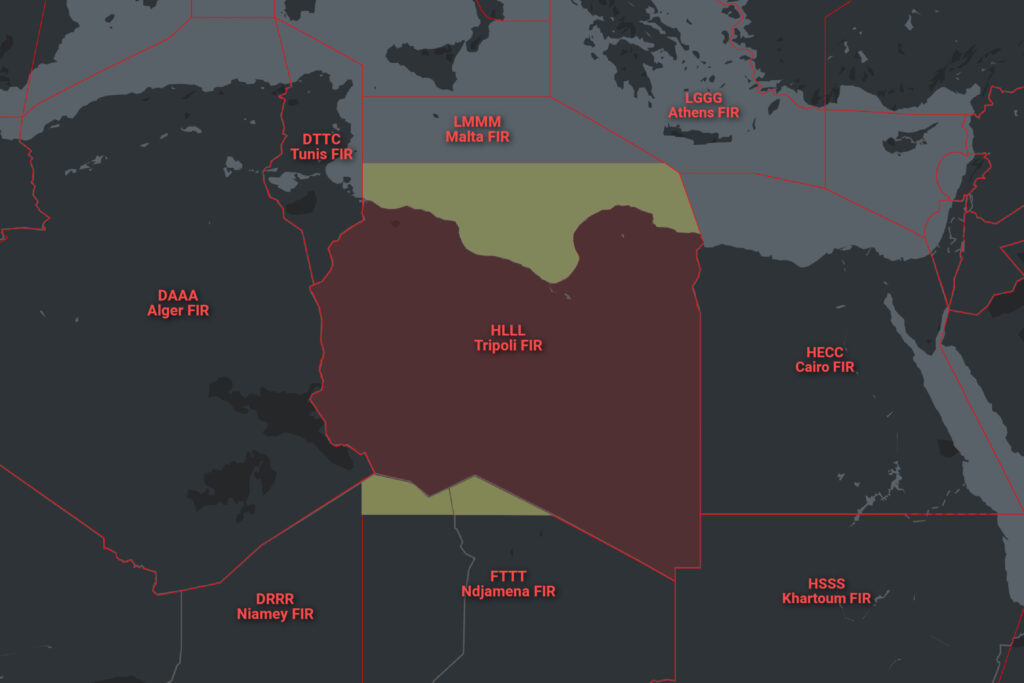
Red = can’t fly. Yellow = good to go.
Here is our summary of it
Feel free to fly over the water, but you won’t, because there’s no reason to.
What do we mean by that?
Well, most of the airways in this bit of water are North-South, connecting airports on the Libyan coastline to the Malta FIR. You can’t use them, because you can’t fly to Libya.
There are some East-West airways, and some of these might be useful for flights from the likes of Tunisia to Egypt, for example. But none of these airways stay overwater the whole way – they all hit the Libyan landmass at some point. So you can’t use these either.
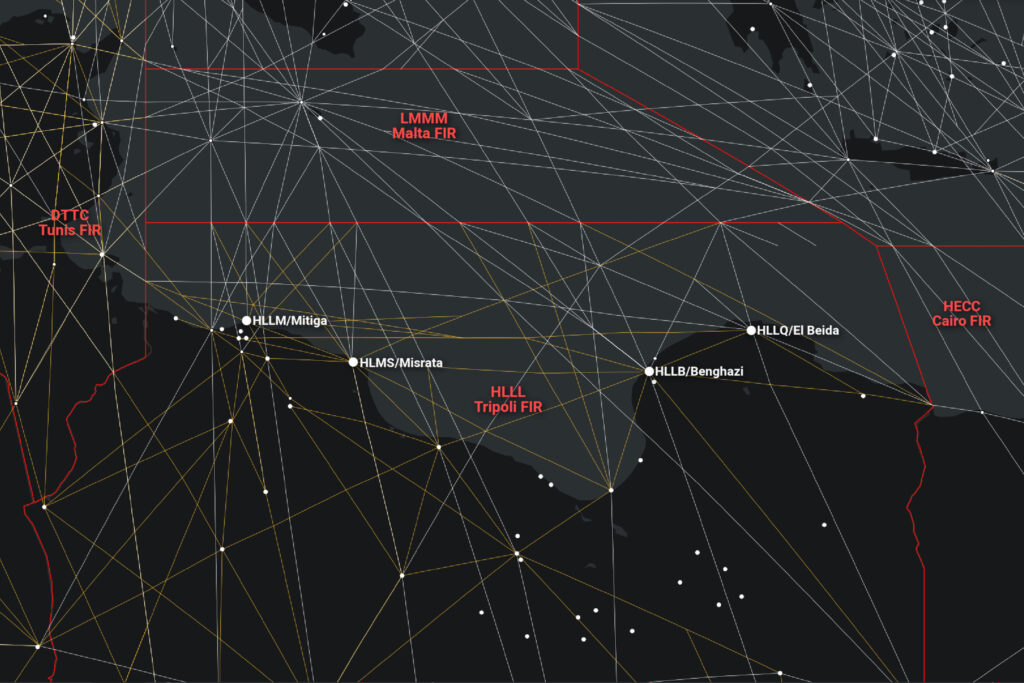
Water north of Libya = zero useful airways.
So in practical terms, we suspect that the FAA lifting the prohibition of flights over the water north of Libya doesn’t mean very much, because no-one’s going to fly there.
Oh, and the thing about Chad
Yes! There is a little patch of nothing in northern Chad (the tiny bit which is technically underneath Libya’s HLLL/Tripoli FIR) where you’re now allowed to fly too. Yay!
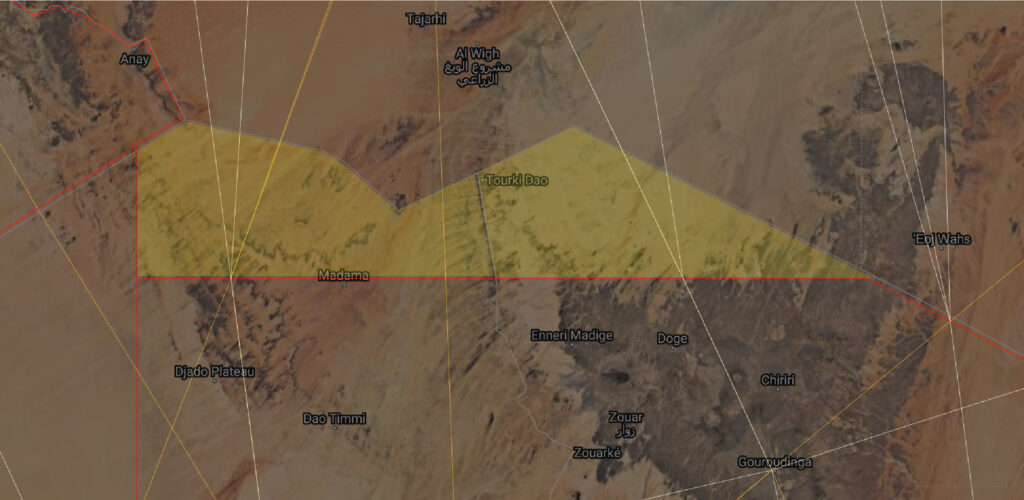
Enjoy a whole lot of nothing over northern Chad.
So, what does this really mean for ops?
Well, first up, the rest of Libya is very decidedly still not OK.
There have been a whole bunch of reports of issues in Libya, some fairly recently. From GPS jamming, to reported drone shoot-downs, to known anti aircraft weapons that can reach 49,000’…
Aside from the slight improvement the US has mentioned, there is really no change on what we wrote last year.
So Libya remains a “Do Not Fly” area.
Libya remains volatile. Safety and security on the ground is not good, and there is a significant risk to aircraft overflying due to the conflict and weapons available to militia groups.
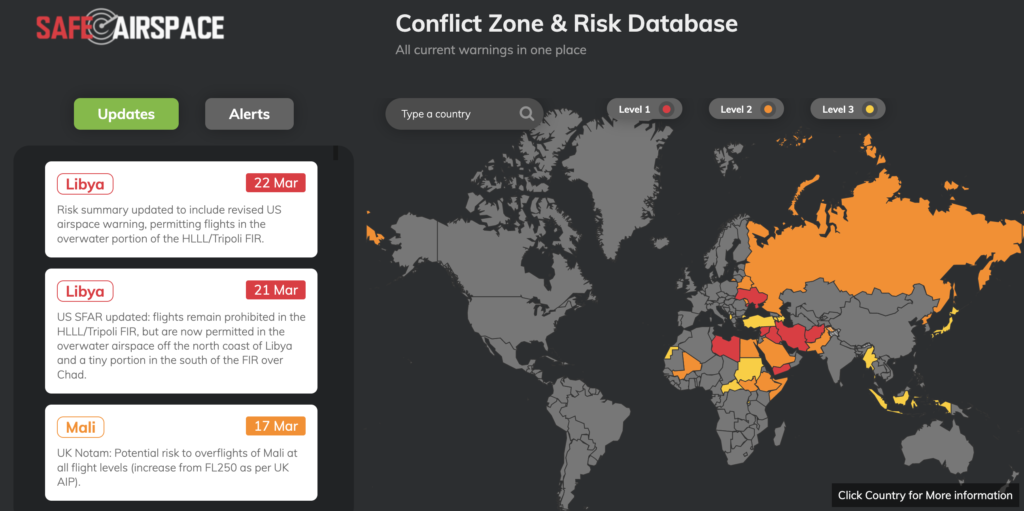
Tell me more about the SFAR
SFAR 112 has been extended to March 20, 2025 but they will keep monitoring the situation and updating it as and when the security situation changes.
The SFAR provides a good summary of the situation (the ongoing, messy, risky situation). You can read it via the link at safeairspace.net/libya
More on the topic:
- More: Libya Airspace Risk: An Idiot’s Guide
- More: Mass evacuation of aircraft – Libya
- More: Libya Airspace Update March 2022
- More: SafeAirspace: 2021 Update
- More: Libya Airspace Update Oct 2019
More reading:
- Latest: Teterboro: RIP the RUUDY SIX
- Latest: 400% increase in GPS Spoofing; Workgroup established
- Latest: GPS Spoofing WorkGroup 2024
- Safe Airspace: Risk Database
- Weekly Ops Bulletin: Subscribe
- Membership plans: Why join OPSGROUP?



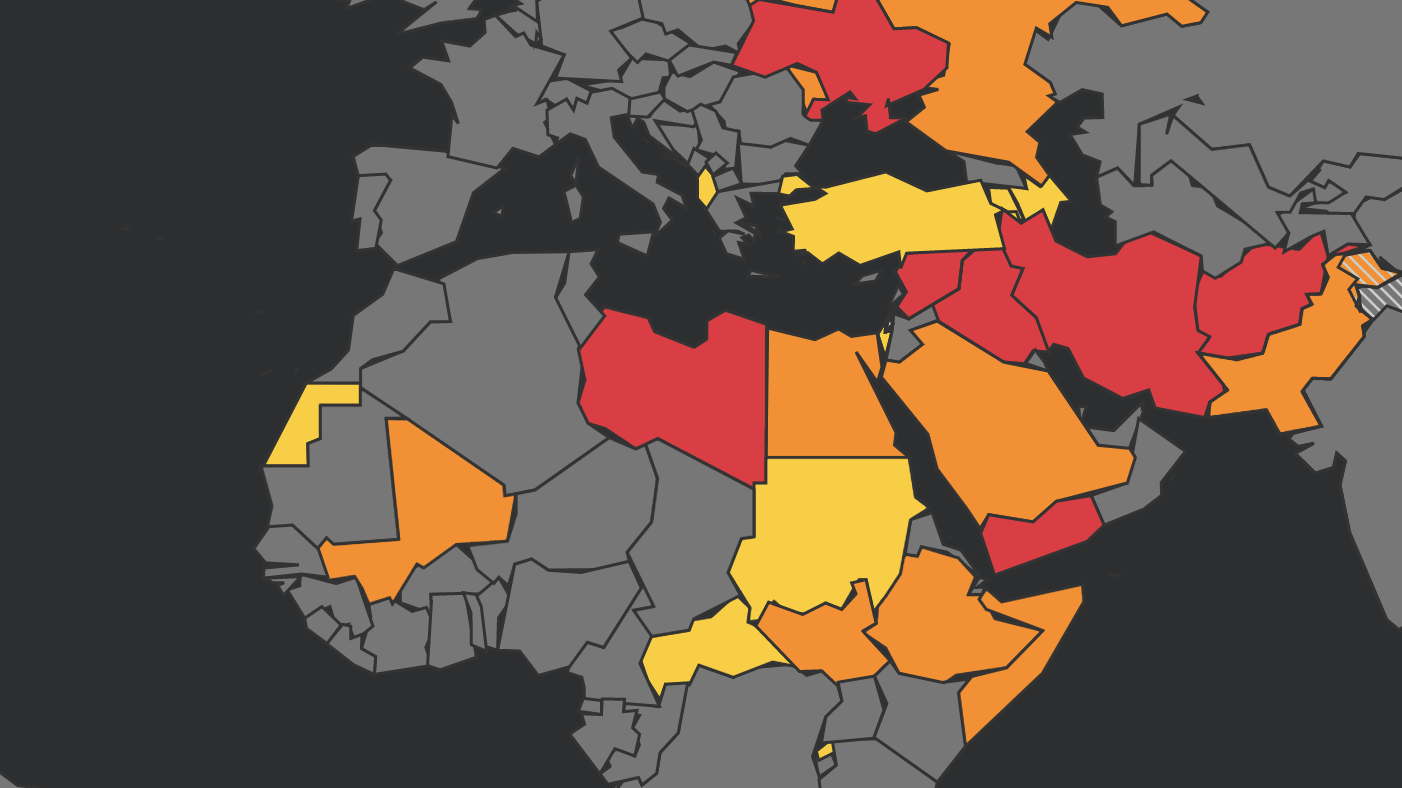
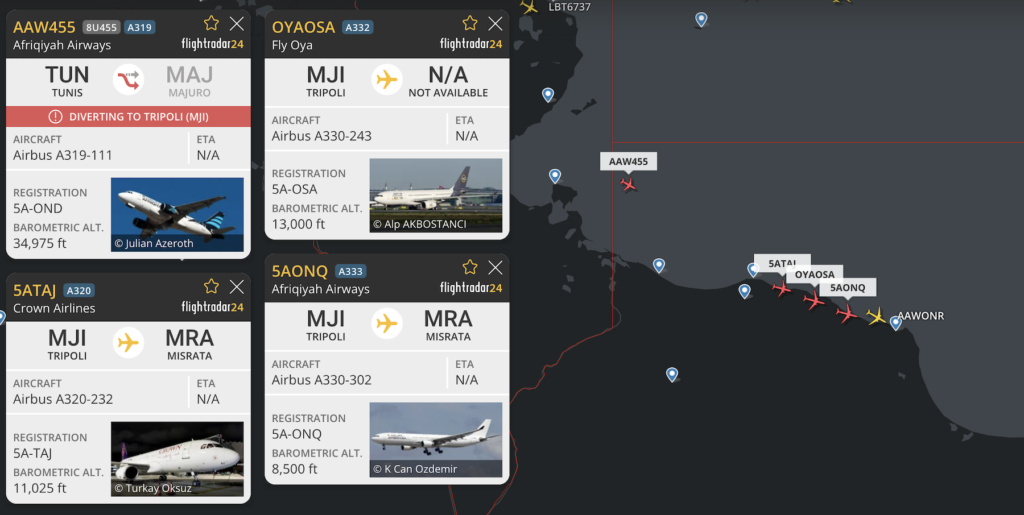







 Get the famous weekly
Get the famous weekly 





